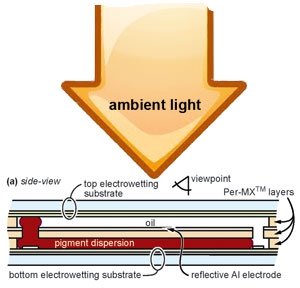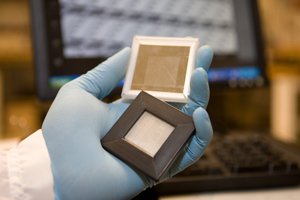It's pretty much the holy grail of display technology - a screen with the vibrancy, colour-reproduction and refresh rate of an LCD screen with the power-draw of e-ink. Believe it or not, though, that's exactly what a team of researchers at the University of Cincinnati claims to have done.
The development is the result of around seven years of research into electrofluidics and uses what the team is calling a ‘zero-power' design. Like an e-reader, the display is able to use the reflection of natural light, cutting the requirement for a backlight. By using a highly reflective electrode positioned behind the pigment, the display is able to reflect enough light to give the impression of bright, vibrant images.

As for the coloured pigment, it sits in pockets in front of and behind the reflective layer and can be quickly moved with a small electric charge. This is similar to an e-ink display, but at a speed that makes showing video possible. As the reflected light passes through it, the pigment is capable of reproducing a full range of colours.
The properties of the fluids also mean that the oil and pigment will not mix, so the display can hold the image even after the power has been turned off.
According to lead researcher Jason Heikenfeld, "conventional wisdom says you can't have it all with electronic devices: speed, brightness and low-cost manufacturing. That's going to change with the introduction of this new discovery into the market".

The best part about the new technology is that it can be manufactured on a commercial scale using the same facilities used to make conventional LCD panels. As ever, it's still a few years off, but the team estimates that this technology is likely to appear in around three years time, starting with uses like updatable labels in supermarkets.
A more detailed explanation is available from the University of Cincinnati website.













